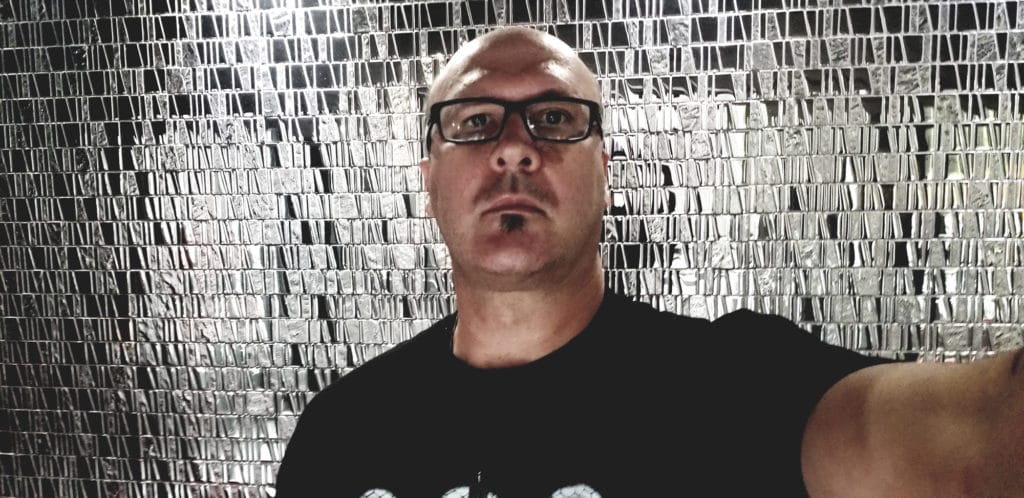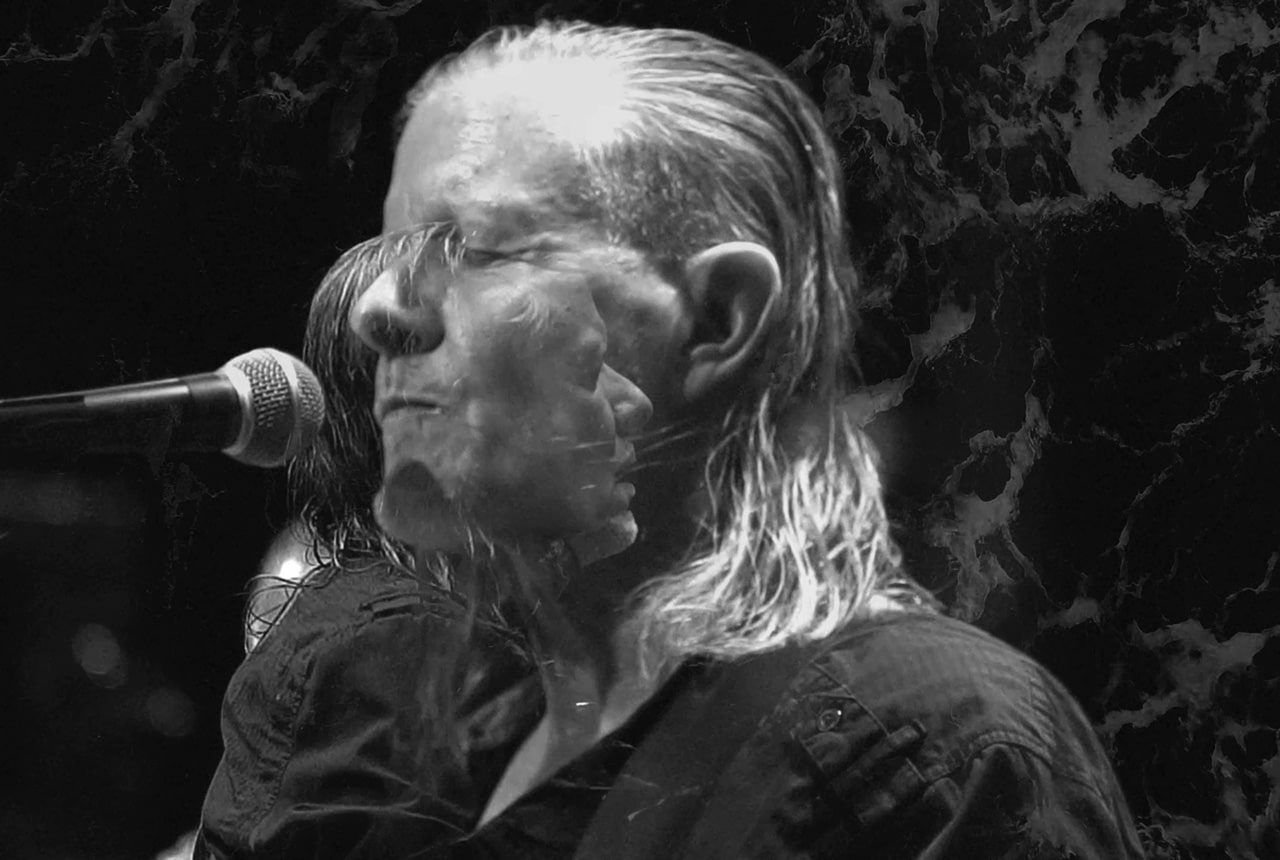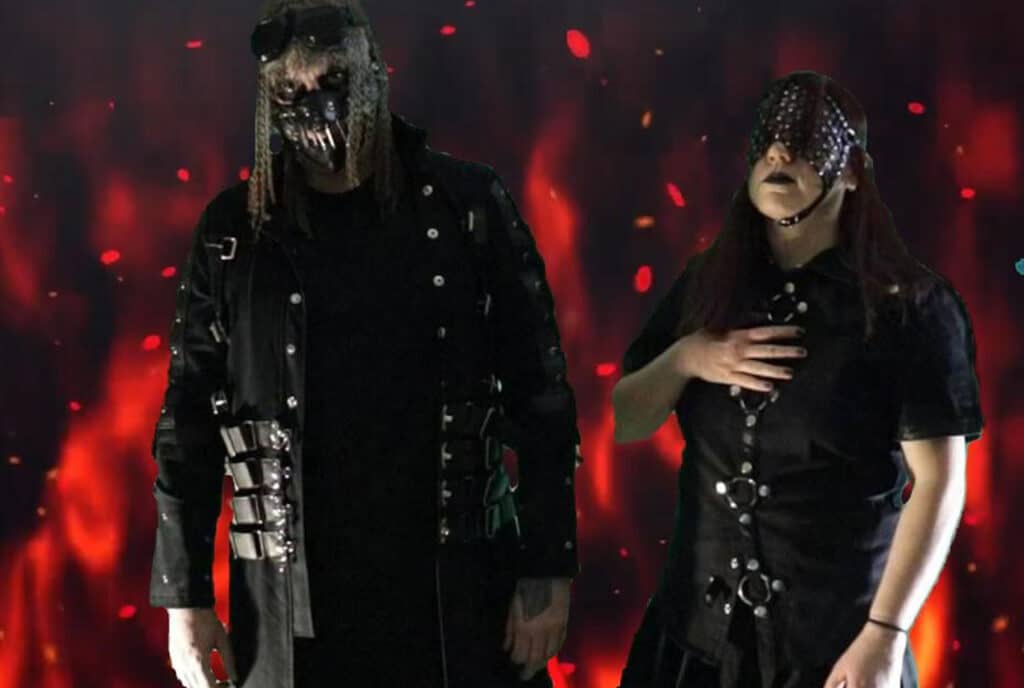The documentary Where Does a Body End? presents an intimate portrait of the band Swans, from their emergence from the NYC no-wave/noise scene in the early ’80s through the various line-up and stylistic shifts. Utilizing recent performance footage and interviews, as well as extensive archival material, it provides a history of the band, and, just as importantly, it illustrates the impact Swans have had on their fans and peers. The film has been shown in festivals as well as at special screenings around the world. Unfortunately, Covid-19 led to the cancellation of dozens of events planned for recent months, but it is now available for home viewing with a DVD/Blu-ray and digital release. The deluxe two-disc Blu-ray edition contains over 150 minutes of material that didn’t make it into the final cut of the film. The following is an interview with Where Does a Body End? director Marco Porsia.
What was your inspiration for making this film?
Marco Porsia: Basically, I’ve been a long-time Swans fan since my teens. I think that for many people, when you’re a teen, you have those two or three bands that are above all others. Swans were that band for me, and I just stayed with them my whole life. I really admired the music and loved the band. When Swans re-formed in 2010, I just knew in my head that I wanted to document as much as I could with the band. Having become more involved with film and having worked in television with experience shooting and editing, I thought maybe I could do something for them this time.
There was not much out there in terms of documenting the band, especially in a live setting. So every chance I got, I started filming the band live. They would come to Toronto, or I would go down to New York and film some shows there. By that time, I had become friendly with Michael [Gira], and I asked to tag along one time to some shows in LA and San Francisco. I started amassing a lot of live material. Out of all that, I put together a couple of live performances with the band that Michael liked and included in The Seer bonus CD issue limited edition.
Having done that, and having experienced someone on stage so many times, I was in a position to do more. I wanted to tell the story of Swans, not just film the live shows. And having built this rapport with Michael, one day, I think it was in 2014, I proposed the idea of doing a documentary on him and the band. I know he was wary of it, but he gave me his okay. I think by that point, he trusted me enough to let me do my thing and to see what happened. So that was the beginning. I had this idea in my head, and I felt this was a story I wanted to tell.

What was the process like gathering the archival material?
Marco Porsia: Having filmed a lot of the live shows after the reactivation, I knew this period was covered, but there was very little material in terms of archives. My next step was trying to gather as much archival material as I could and starting to write. I knew who the photographers were that had taken a lot of the photos of the band, so I reached out to them. I think Catherine Ceresole was probably the one who had the most photos of Swans from the early eighties period, and also Wim Van de Huls. I reached out to as many photographers whom I knew had taken pictures. Everyone was accommodating in saying yes to taking part in the film and in sometimes allowing me to use their photos for free.
At the same time, I started interviewing. I made a list of people I wanted to interview, and lots of times, they would also have great photos. Jarboe was absolutely vital and essential in helping me and letting me use her personal archive. She had collected hundreds and hundreds of photos, and I was able to use her personal archive, which was really essential in visualizing the story.
The video part is an interesting story. When I first spoke to Jarboe, she told me that when she and Michael were together, she had collected hundreds and hundreds of VHS tapes that fans would give her of live shows after they would play. She had this box of hundreds of hours of material in different formats of tapes. But then when they split up, Michael took the box away.
She didn’t know what had happened to it, and neither did Michael. It was initially understood that this treasure trove of material was lost forever, and no one knew where it had been the mid-nineties. And then, one day I got an email out of the blue from Michael saying he had found the box after 30 years during one of his moves. I drove down to New York and got the box. It was an incredible find, like an archeological find. I digitized those tapes, and that’s when I knew I had a film because then I could really visualize every period of Swans.
There were so many anecdotes that I learned, especially from Jarboe, because she remembers everything that happened. Everyone in the band was generous and kind. Because of the songs, they always had this persona as a band, even Michael, of being very stern and menacing—a bad you’d be afraid to talk to. But, as I met everyone and interviewed everyone, everyone was so friendly and personable. It was easy to get close to them.
Was using crowdfunding to finance the film an obvious choice?
Marco Porsia: I knew I had to raise some funding. I had started the film just using my own money, but I realized that I needed more to finish it. So when I did the Kickstarter campaign, I wasn’t sure how much to even ask, but once the funding campaign hit its goal after a few days, I knew then that there was an interest in the band and in the film. I put more of my focus and determination on it. I knew I had to make the film. It became real once the crowdfunding campaign ended.
It was a huge help in being able to finish the production and mainly with travel expenses, and paying for Super 8, which I stayed in a lot. That can be very expensive, transferring the film to digital. But the one thing I was able to save money on was the editing, because I’m an editor by trade. It’s what I do. I had my system at home, so I was able to do everything on my own. The bulk of the expenses were all the interviews and the film costs and things like that—archive material.
Were you thinking about to what degree the movie would be aimed at Swans fans, as opposed to those interested in the subject matter but not particularly familiar with the band?
Marco Porsia: Yeah. I had to kind of find a balance because even being a fan myself, I knew the whole story of the band already, and I wanted to bring that out. But also I didn’t want to make it a traditional kind of music doc, because I felt in Swans music, there’s something much deeper. Especially with Michael, I wanted to kind of go into his psyche.
I didn’t really have a clear idea at the beginning on how it would become, or how it would end up. But I knew I didn’t want to make it just for the fans because that was almost too easy. I wanted to make something that brought people into the music that could reveal something to someone. I tried to do that when I was able to focus. After I did my first cut, it was over four hours long, and it was just so unfocused. I threw everything I had in it, and then it was more of a process of elimination and taking out what wasn’t needed to tell the story.
And so then it became more about focus as I took stuff out. I knew the fans would love the film, so it was more of a challenge to make it for someone who didn’t know much about the band; could they come out of it with an understanding of the band and maybe become a fan themselves? After showing the film at different festivals, I have gotten a lot of comments from people who saw the film and didn’t know much about Swans and really appreciated the story and the new level of understanding of Michael, his lyrics and the band. So I like hearing those comments even more.
Is there anything else you’d like to add?
Marco Porsia: One thing that I discovered while filming the band and also filming the live shows was how many young kids were at the shows. It was great to see these teenagers because, as you see in the film, I would often scour audiences trying to find these young kids and talk to them, like that 13-year-old who was there with his dad. I just couldn’t believe how many young kids were at shows because the music is even more difficult to get into now. That really was a nice surprise and a pleasant thing to discover while filming.
For more info on the film, visit wheredoesabodyend.com. It can be purchased on Vimeo at https://www.vimeo.com/ondemand/swans. Physical copies can be ordered from MVD Entertainment Group and Young God Records.










